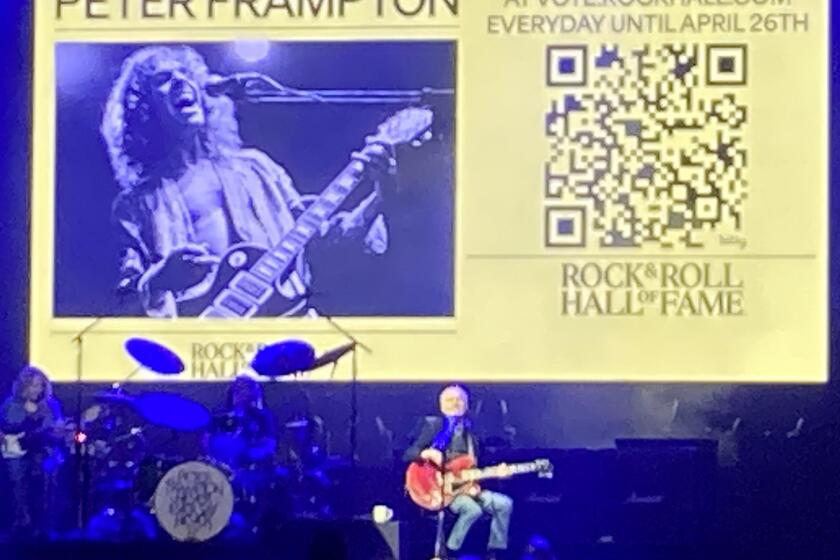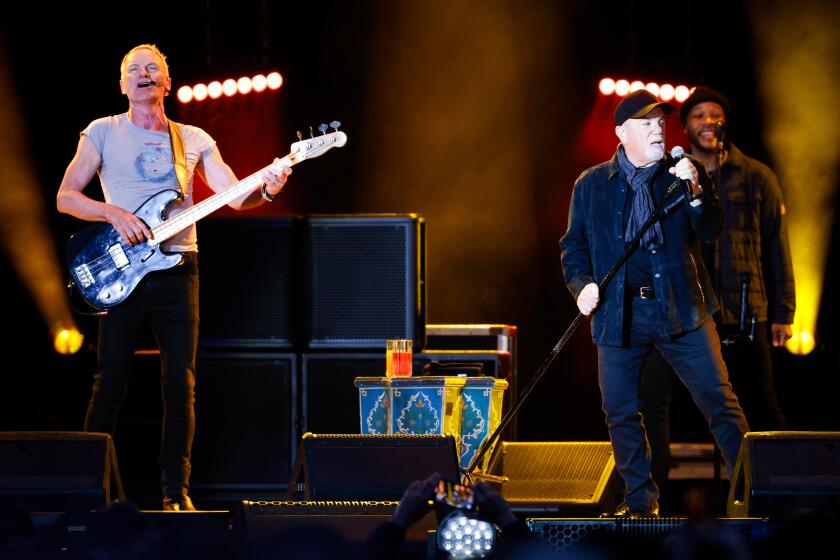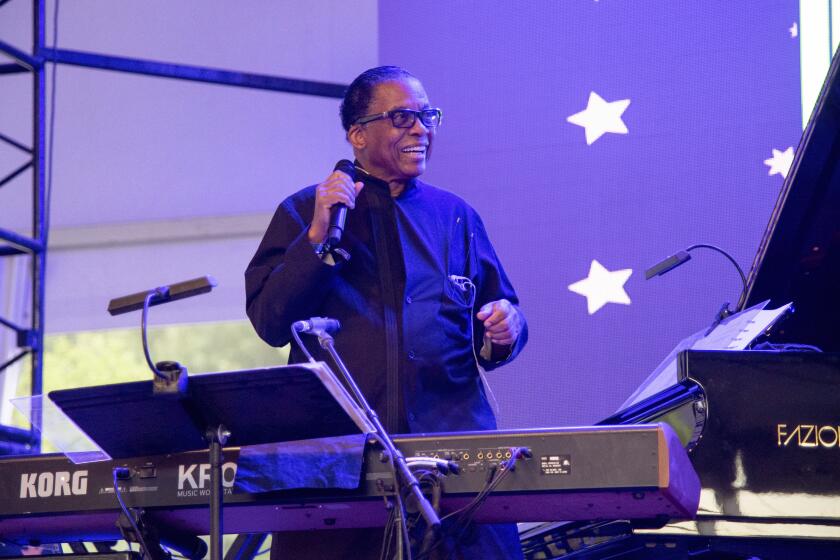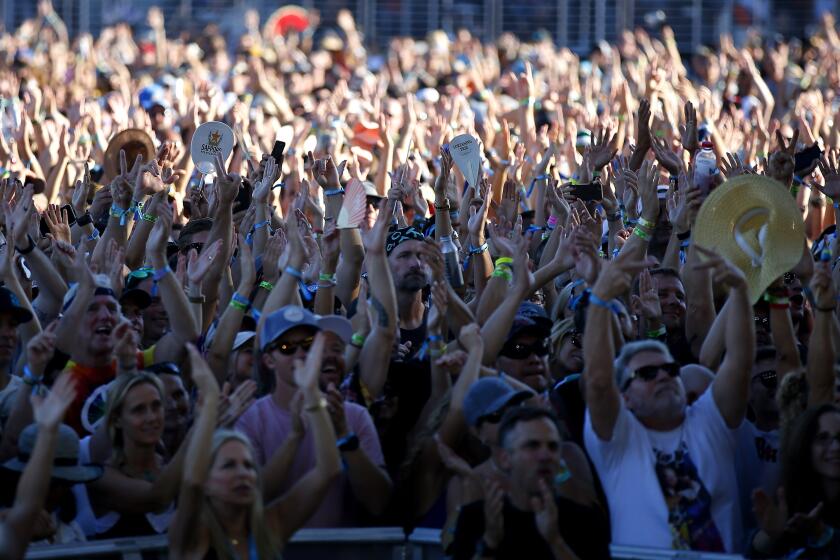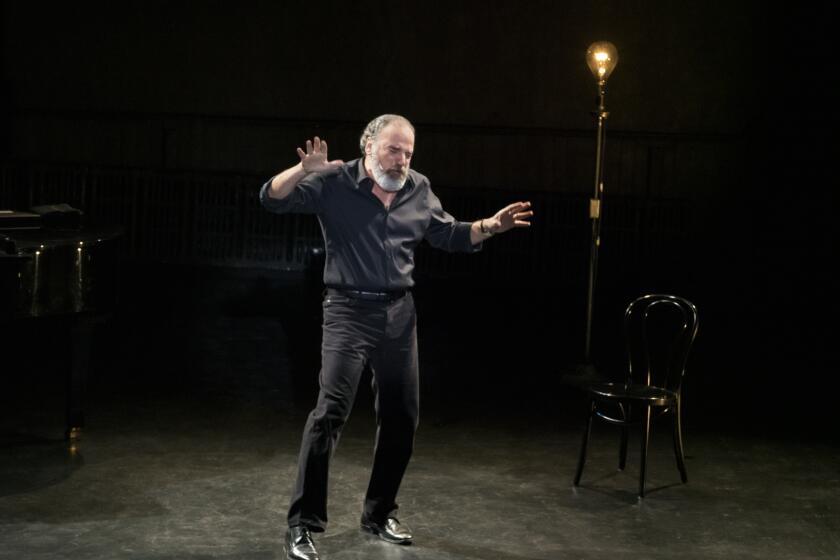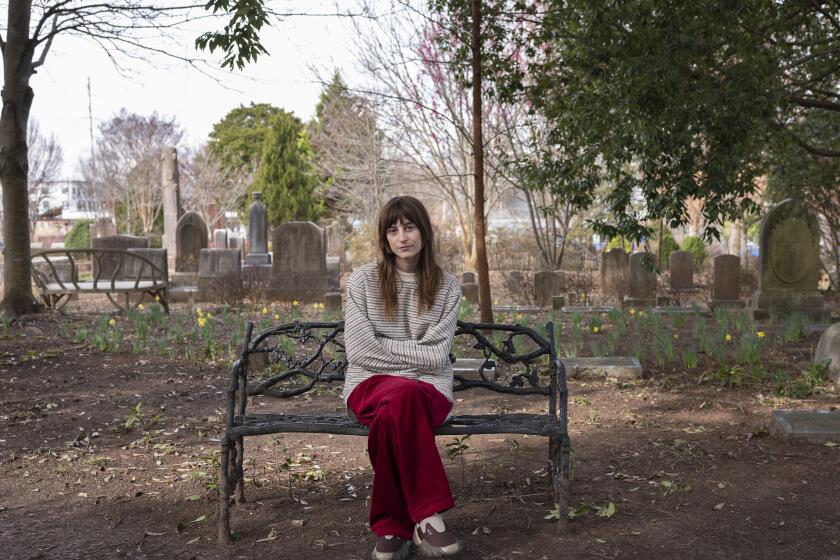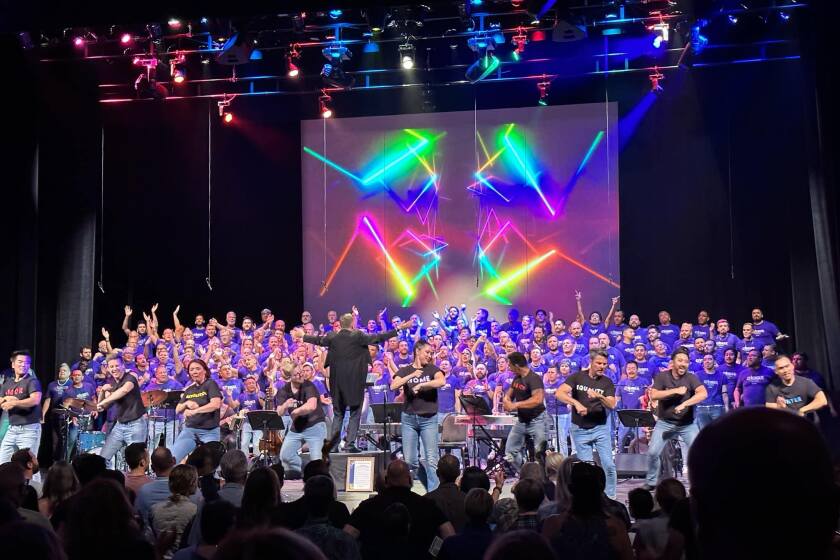And all that jazz! Bram Dijkstra’s invaluable record collection to be donated to SDSU
The nearly 50,000-strong collection has rare albums by Sun Ra, Cecil Taylor and a host of jazz, blues, gospel and reggae artists
Bram Dijkstra doesn’t sing or play a musical instrument. But the acclaimed author, art history scholar and retired literature professor has spent nearly 65 years building his one-of-a-kind record collection. Now, he is poised to make a profound musical impact by donating his nearly 50,000 rare jazz, blues, gospel, reggae, soul and rhythm-and-blues albums to San Diego State University.
“It won’t be easy to part with them, because these records have been such a big part of my life,” he said. “But I think the university will be a good place for them to be enjoyed by future generations.”
Announced today by Dijkstra and his wife, noted literary agent Sandra Dijkstra, The John Coltrane Memorial Black Music Archive will be housed at SDSU’s Love Library. Its monetary value easily exceeds $1 million, but its historical value is priceless.
The twisting tale of intrigue that led the records to their new home at SDSU is almost worthy of a Hollywood screenplay. The collection is named, at Dijkstra’s behest, in honor of towering jazz saxophone icon Coltrane, who died in 1967 and was pivotal in expanding the parameters of modern jazz.
“This is a fabulous and invaluable collection of rare depth and breadth,” said Chuck Haddix, the curatorial director of the University of Missouri’s Marr Sound Archives, which boasts more than 400,000 audio recordings. “It will serve as an asset to the world for years to come and is a game-changer for San Diego State University.”
Those sentiments are shared by SDSU Special Collections Division Head Robert Ray and SDSU Interim Library Dean Patrick McCarthy.
“It’s amazing,” McCarthy said.
“This will get attention around the globe and bring people from all over to San Diego to use this material. And its impact will be much broader than just a musical one. Because the music in Bram’s collection tells about a people, their lives, hopes, dreams and a huge cultural phenomenon that has a had an enormous impact on American culture and beyond.”
Ray, who was instrumental in landing the collection for SDSU, is both excited and humbled by Dijkstra’s choice of the school.
“Bram’s gift to the university is the pinnacle of charitable philanthropy and you couldn’t put a price tag on it,” Ray said.
“He could have sold it off, if he wanted. But Bram is embracing SDSU and the promise and possibilities of his collection, and we have to do the same. It’s a treasure chest.”
Make that a treasure chest that would have been well beyond the school’s ability to obtain, were it not being given to SDSU by Dijkstra.
“We are a public university, we’re not swimming in money and there is no way we could ever afford to buy a collection like this,” McCarthy affirmed. “So this is really extraordinary, because we’re reliant on donations to acquire collections.”
Hearing Coltrane was life-changing
A model of vigor at 82, Dijkstra is still pondering whether to give parts of his collection to SDSU incrementally in the coming years, or all of it posthumously. Either way, he insisted that — rather than bear his name — it be called The John Coltrane Black Music Archives.
Dijkstra first heard the North Carolina-born saxophonist on a 10-inch record by Miles Davis in the 1950s, when he was a teenager growing up in Holland. Already a devoted jazz fan, he was instantly captivated by his new discovery. It was, literally, life-changing.
Like other forward-looking music fans from Europe and around the world, Dijkstra heard a sense of freedom and endless possibilities in jazz. What he heard also compelled him to move to the U.S., where he attended college and became an American citizen and a university professor. In addition to teaching literature courses at UCSD, he also taught classes on jazz and blues, as well as “Black Music, Black Texts,” which explored the intersection of politics and music.
“There was something about what Coltrane was doing that really spoke to me. Essentially, he’s been my patron saint ever since (I first heard him) and is a large reason why I came to America,” said Dijkstra, who was born on the Indonesian island of Belitung, where his father worked at the time.
“Black music is the center and soul of my collection, which includes records that date back to the 1920s. And I’ve always pursued some of the things Coltrane was interested in, like (the music of India’s) Ravi Shankar and the Eastern connection. All of that has been a tremendous source of influence in my work, thinking and writing. As far as records go, I only buy music I like. I hate the idea of collecting. It’s all about listening for me, and I’ve always been hungry to listen to a lot of different kinds of music.”
Dijkstra has kept his albums in pristine condition. His collection numbers about 28,000 vinyl records, many of them long out of print and highly sought by archivists and aficionados, and about 20,000 CDs. It includes every album released on the fabled Blue Note Records label between the mid 1950s and the late 1960s, an assortment so rare that even the New York-based Blue Note label — which has the master tapes for those recordings — doesn’t have physical copies of them all.
Dijkstra does.
He also has every album Coltrane recorded, about 200 or so in all. These include live bootleg recordings and some on the saxophonist’s own Coltrane Records releases, among them the much-coveted original version of “Cosmic Music.” Dijkstra’s collection also features rare, self-produced albums by such jazz innovators as saxophonist Albert Ayler and pianist Cecil Taylor (whose 1958 United Artists album with Coltrane, “Hard Driving Jazz,” is one of Dijkstra’s prized possessions).
Sun Ra and Cecil Taylor
In a number of cases, Dijkstra wrote directly to the artists to place his order for the albums they released on their own.
“I’ve always been fascinated with certain groups and players,” he said. “Cecil Taylor was always a favorite of mine and I have a lot of the early Cecil Taylor recordings. Sun Ra is another one who fascinated me. I’ve never been able to read music and have no technical knowledge, but I do love music. And if you listen to early Sun Ra, nothing is perfect; it’s incredibly messy, but also incredibly fascinating and sophisticated...
“What interests me is the link between the sounds of emotion and the sounds of nature, and how those enter into creative forms of music. And, for me, jazz has always been that. But this collection is not just jazz. It has a huge amount of jazz, obviously, but also a lot of other things.”
Dijkstra saw Coltrane perform in concert a number of times, including at the Jazz Workshop in San Francisco in the 1960s. There, in between sets, he found himself briefly standing at the bar next to the fabled saxophonist.
Did they speak?
“I was literally tongue-tied,” Dijkstra replied with a chuckle.
“Here was my hero — he still is — and I debated if I should say something. I decided that if I were to say to him: ‘I’ve been listening to you for a decade and love your music,’ he would have undoubtedly smiled, and said: ‘That’s nice,’ and walked away. So I didn’t say anything to him.”
The fact that Dijkstra’s collection ended up at SDSU, not UC San Diego — where he taught American and Comparative Literature for four decades — is a major victory for SDSU. In fact, he had offered the collection to UCSD about a decade ago, only to be turned down flat.
“It was so insulting,” recalled Dijkstra’s wife, Sandra.
“When we approached UCSD, where Bram has given 40 years of his life, the Special Collections director literally said: ‘We don’t do vinyl.’ ”
Bram Dijkstra still sounds a bit incredulous that UCSD turned down his collection without even seeing it.
“I don’t want to impugn whoever happened to be running UCSD’s Special Collections department at the time,” he said. “But that ‘no vinyl’ was obviously their policy, which seemed to be startlingly stupid.”
About two years ago, USC in Los Angeles came close to acquiring Dijkstra’s record collection. But the more he engaged in discussions with the school, the more it became clear to him USC was more interested in some of his albums for their monetary value rather than their historical worth.
He also was concerned the school might not be inclined to embrace the totality of his entire collection and would simply cherry pick what it wanted. Other issues also arose.
Then, about 18 months ago, SDSU acquired Dijkstra’s collection of rare pulp fiction magazines. SDSU Special Collections honcho Ray only discovered Bram’s record collection, by accident, when he came by the Dijkstras’ Del Mar home to pick up the pulp fiction magazines.
When he caught a glimpse of what Bram Dijkstra calls his “wall of jazz” — stored on floor-to-ceiling shelves that require a ladder to access the higher reaches — his eyes all but popped out.
“First of all, I was simply staggered by the Dijkstras’ art collection,” recalled Ray, who had previously worked at the University of Missouri’s Special Collections department home to the Marr Sound Archives.
“And then, seeing Bram’s recorded sound collection, I couldn’t fathom how — in a single lifetime — something like this could be collected!”
Ray selflessly approached Rutgers University, UCLA, Bowling Green and a few other schools, including the University of Missouri, that are noted for their substantial jazz record collections. Somewhere along the way, he realized that SDSU might make an ideal home for Dijkstra’s albums.
“As an archivist, what you want to do is find the best place for a collection,” Ray said.
“It hadn’t crossed my mind SDSU would necessarily be the right place for it, coming from the Marr and knowing the many signature and foundational collections that some universities have. So I thought that maybe these, or some other archives, would be the best place and I contacted them. But they already had foundational collections and, while they were just stunned by the magnitude, quality, and greatness of Bram’s collection, they hesitated for various reasons.
“Then, it began to dawn on me: ‘This is something SDSU needs.’ It should have dawned on me earlier, but I’m sure glad I woke up.”
Substantive conversations with the Dijkstras ensued. Ray gradually won them over.
“Robert Ray helped us think of certain possibilities,” Bram Dijkstra, a UCSD emeritus professor, said.
“Rob is such an interesting person. And he is interested in a lot of things that others are not, and he is able to express enthusiasm for them. That became a very important element in our ultimately thinking: ‘Why not have this collection at San Diego State?’ Because SDSU is, after all, one of the important venues and a much more open and varied venue for students than UCSD is anyway...
“At a certain point, we thought: ‘Well, here is a person who is tremendously enthusiastic about the collection, so why not make him the central figure?’ Rob was very detailed about how the collection would be dealt with and it’s been a very exciting experience. He really deserves all the credit for SDSU acquiring the collection.”
As a result, one of the world’s most notable privately owned record collections will remain in San Diego, to be shared with future generations. And it probably wouldn’t have happened at all had Ray not come by to pick up Bram Dijkstra’s pulp magazines for SDSU’s Special Collections.
“It was,” Sandra Dijkstra said, “a pure case of serendipity.”
Get U-T Arts & Culture on Thursdays
A San Diego insider’s look at what talented artists are bringing to the stage, screen, galleries and more.
You may occasionally receive promotional content from the San Diego Union-Tribune.



